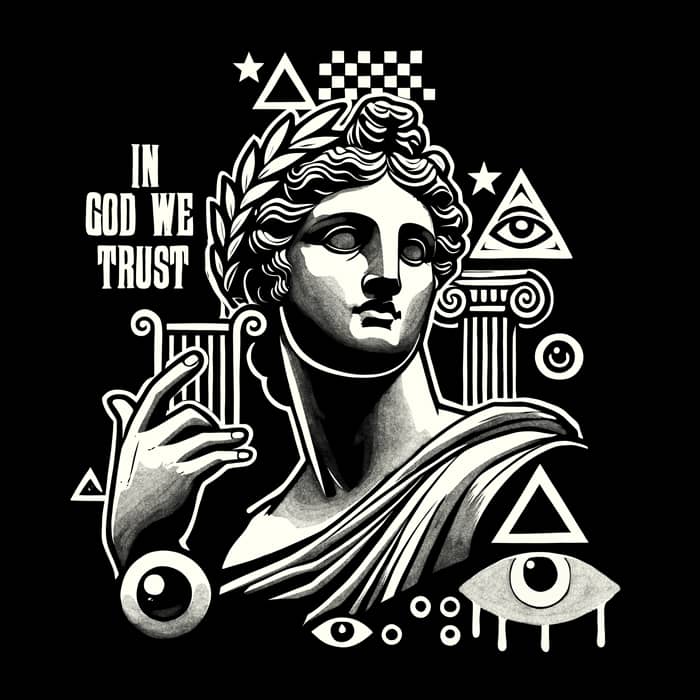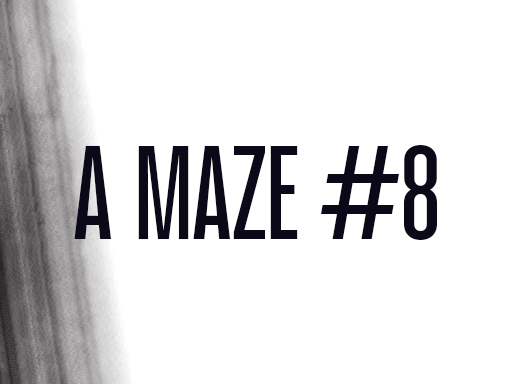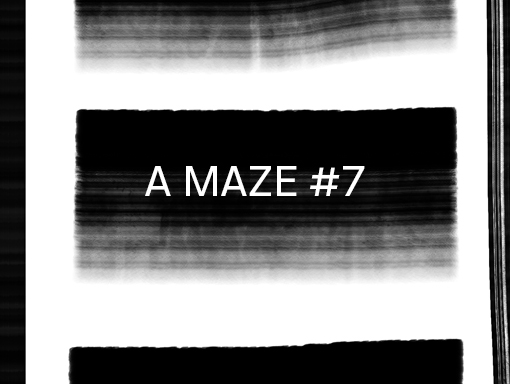
When Mythology Meets Modern Paranoia
“Deus ex Trust” is more than a digital illustration — it’s a collision of symbols, eras, and ideas. The classical elegance of the Apollo statue fuses with cryptic motifs like the all-seeing eye, checkerboards, and pyramids, culminating in a surreal visual paradox: Who do we trust when even gods wear the symbols of control?
⚡ The Spark: Apollo in a Post-Truth World
At the core of the artwork stands Apollo, the Greek god of light, truth, knowledge, and the arts — a symbol of clarity and divine order. But in today’s world, truth feels increasingly elusive. Facts compete with beliefs, clarity is clouded by chaos, and the line between worship and manipulation has blurred.
In this piece, I wanted to recontextualize Apollo — not as the radiant god of ancient Greece, but as a silent witness to our modern contradictions. In a world where the phrase “In God We Trust” is printed on money, power is hidden in symbolism, and faith is often blind, what does Apollo represent now?
👁 The Symbol Soup: Eyes, Triangles, Columns
Around Apollo, you’ll find a visual language soaked in conspiracy lore and esoteric iconography:
- The all-seeing eye, dripping or staring from triangles — referencing surveillance, omnipresence, and secret power.
- Checkerboards and stars — symbols often associated with Freemasonry and hidden systems of order.
- Classic columns — hinting at institutional stability, or its illusion.
- Apollo’s gaze — intentionally blind, questioning the nature of divinity when divinity is used as a symbol of control.
These elements aren’t used to promote any one theory. They are visual metaphors for doubt, irony, and the hunger for meaning. In an age of deepfakes, algorithms, and collapsing narratives, symbols are no longer sacred — they are tools, sometimes weapons.
🏛 “In God We Trust”… But Which One?
The inscription “In God We Trust” looms next to the statue — a phrase taken from currency, politics, and patriotism. But paired with Apollo and esoteric symbols, the message becomes ambiguous. Is it a declaration of faith? A critique of blind allegiance? Or a warning that even gods can be repurposed as propaganda?
The title “Deus ex Trust” plays with Deus ex Machina, the literary device where a god suddenly appears to solve an unsolvable problem. But in this version, the god isn’t solving anything — he is the question. The solution we trusted may, in fact, be part of the illusion.
🎯 Final Thoughts: Art as a Trigger, Not an Answer
With “Deus ex Trust,” I wanted to provoke a double take — a tension between beauty and discomfort, familiarity and eeriness. It’s an exploration of how symbols evolve, how trust can be engineered, and how even divine figures can be caught in the crossfire of modern mythology.
This isn’t a piece with a final answer. It’s a mirror reflecting the viewer’s own interpretation — do you see a god, a guardian, a warning, or just a statue?
Let me know what you see.


